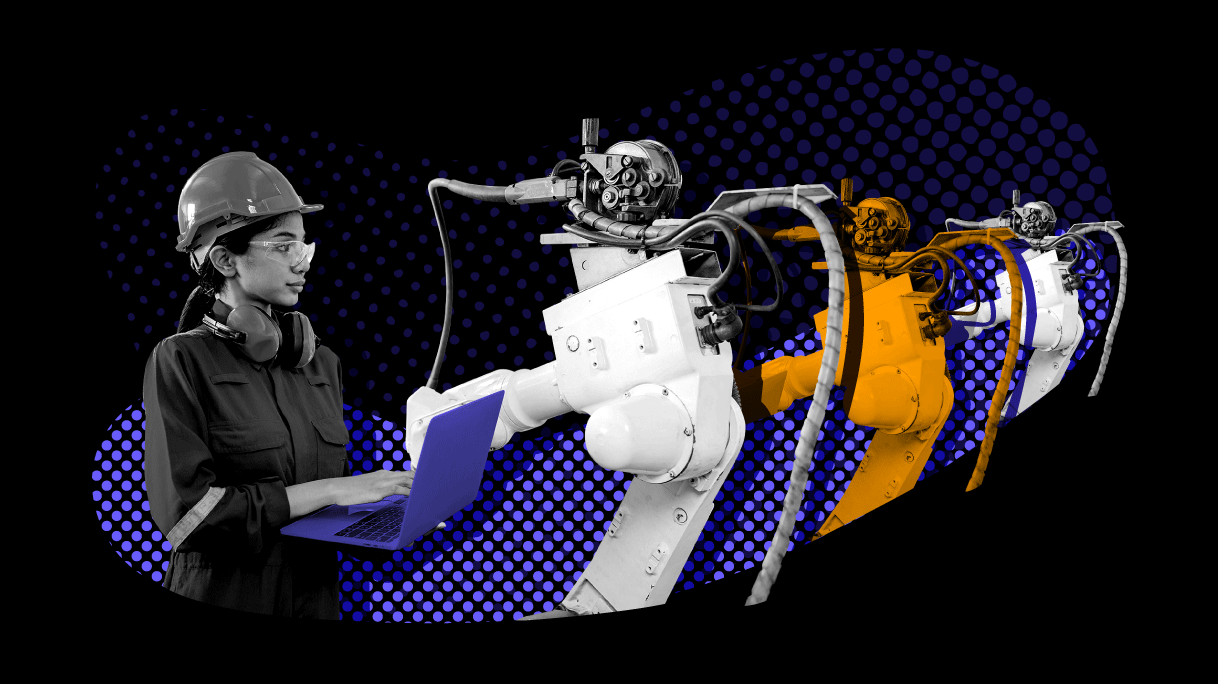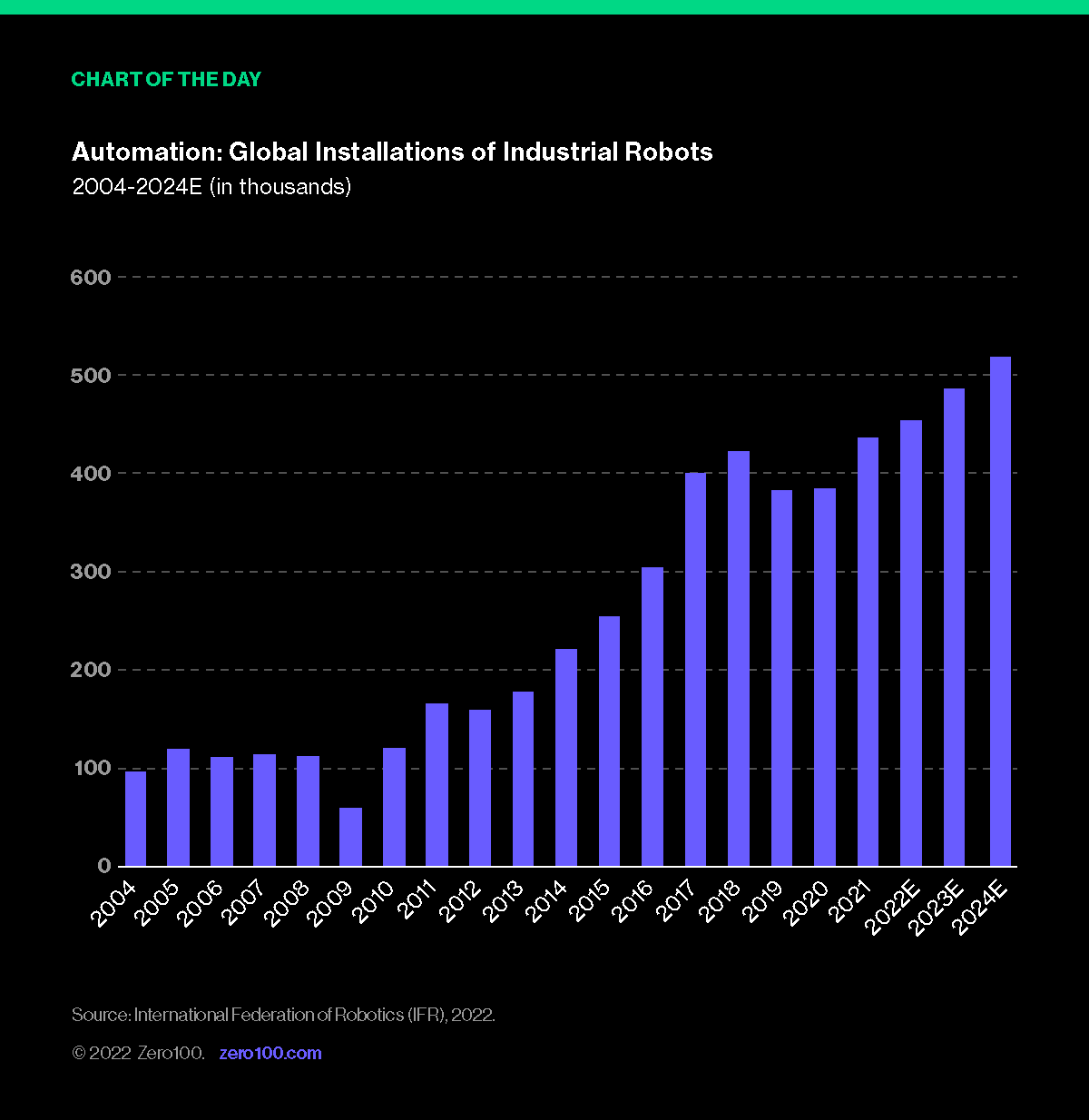
Robot-Up: How Recession and Pandemic Drive Automation
Compared to stalled investment in industrial robots from the last recession, the pandemic was only a speed bump to ratcheting investment in automation. Amidst forward economic indicators, this time's different.
This week's bounty of economic news promises pain, but also hope... at least for anyone selling automation to manufacturers and retailers.
It might be counterintuitive to invest in capital equipment during a recession, especially with interest rates going up, but it's wise given the mega-trends in tech and society. Strategists should look for the fastest maturing digital technologies to stay ahead of what could be a step-change in robotics and automation for supply chains.
Post-COVID Trumps Global Recession
COVID seems so yesterday – but inflation, recession, and turbulent stock markets feel urgent and totally now. And yet when we look back, 2023 will probably be just another economic bump while COVID will forever be an inflection point in human history. Skipping over the many weird effects of COVID on everyday life, here are FOUR MEGA-TRENDS launched by COVID that are driving supply chain automation forward faster than ever:
#1 TOUCHLESS – COVID may not have been spread by contact, but during the first six months when that wasn't clear, everything from home deliveries to store checkouts and airline check-ins became touchless. Consumer habits changed forever. The result is that human problem solvers no longer need to waste time doing the same transaction hundreds of times a day. Self-checkout in retail, unattended delivery, machine vision QC in production, and ML-based help desks are all part of a huge wave of automation that won't stop soon.
#2 IDENTITY – Automation isn't just about robots, but increasing the data feeds into automated systems. From the e-commerce spike to digital passes for entering physical spaces, more people are being tracked as digital customers than ever before. This would have taken 20 years of digital adoption to get to this level of digital adoption and customer data. Our supply chains are now loaded with personal customer information that brings us closer to automating elements of both order capture and fulfillment.
#3 SAFETY – Workplace safety has always been top-of-mind for operations people and during the height of the pandemic many “essential” supply chain workers had no choice but to show up to work and risk exposing themselves to the virus. Automation in warehouses and factories, as well as self-driving vehicles for transport, have been gaining ground for many years, but suddenly nothing makes more sense than an automated operation supporting essential supply chains like food, medicine and utilities.
#4 IMMUNITY – Machines can't get infected by human diseases. They are also generally more tolerant of dangerous conditions and do not panic. The pandemic may have been an initial warning shot to the future we need to design for: extreme heat, drought, cold, etc., plus infectious diseases and other stressful situations. Ask anyone (everyone!) who experienced a flight cancellation this year due to COVID absenteeism and it becomes clear why we might want more machines in operations going forward.
Recession as Accelerant to Automation
So COVID primes the pump to hire more robots. But what about the recession? Aren't workers more available and wage pressures lower? Yes, but the falloff in revenue is usually faster than the drop in costs, which tend to ratchet up, and then hold steady.
Also, the business case for automation benefits from a recessionary period because planners are often able to write-off transitional costs in bad years when investors expect poor earnings. It's the same reason new CEOs often clean house and lean into future oriented bets using the dip as air cover.
An old saying attributed to Baron Rothschild applies: "The time to buy is when there's blood in the streets."
Double Your Bets on Automation Now
For supply chain leaders driving digital transformations, this is the time to put your foot on the gas. Promising initiatives that are already in-flight deserve more investment now. This will tie-in your vendors and push everyone involved to do their absolute best. Plus, next year when people are hungry for work, you'll have a safety net to help smooth over possible project hiccups. When this recession ends, as they always do, you'll be stronger than ever and ready to grow fast into the recovery.

Critical Reading
FINANCIAL TIMES
Chief Sustainability Officers Prosper as ESG Risks Mount
Commentary: Timely discussion of the changing mix of skills the CSO role demands as it continues to gain visibility and momentum among executive teams. See also: Zero100's latest Point of View report on same topic.
#cso #esg #sustainability
NPR: All Things Considered [Listen]
What happens when people want all the air fryers and then, suddenly, they don't...
Commentary: Excellent commentary from subject matter experts at FreightWaves, National Retail Federation, and Michigan State University on the pendulum swing in consumer spending from products to services (and immediate ramification of retailers both larger and small).
#inventory #bullwhip
BLOOMBERG
Who Says China Has Locked in the EV Supply Chain?
Commentary: The collision of alternative materials (lithium vs. maganese) and science (electrochemistry) demonstrate a greater range of scenarios (and sourcing decisions) for automakers seeking to electrify larger and larger portions of their fleet.
#china #EV